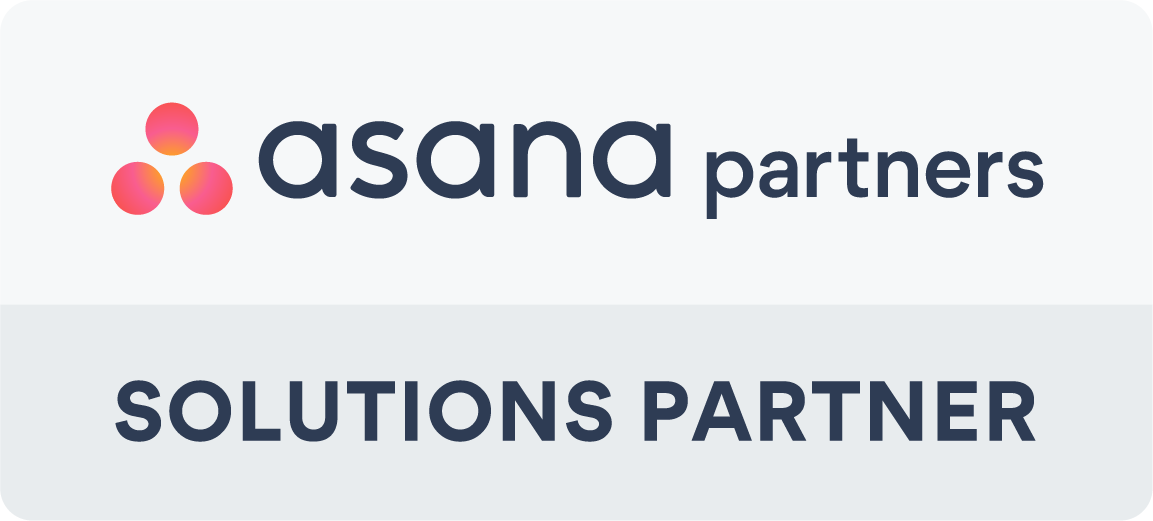When choosing a project management platform, one of the most common questions we hear at Generation Digital is: “How much does Asana actually cost?”
It’s a fair question, especially as Asana’s pricing and plan structure have evolved over the years. Whether you're managing a small creative team or rolling out Asana across an enterprise organisation, understanding each plan's features (and the value) is essential.
Here’s everything you need to know about Asana’s pricing in 2025.
1. Asana Personal – Free Plan for Beginners and Small Teams
Let’s start with the basics. Asana’s Personal plan is free and designed for individuals or small teams who want to start with structured work management. It’s perfect if you're:
-
Getting your head around task management
-
Collaborating with just a handful of colleagues
-
Working on personal or freelance projects
You'll get access to task lists, boards (like Kanban), due dates, calendar view, and the ability to assign tasks. You can collaborate with up to 10 team members.
It’s limited—but intentionally so. Think of it as a test drive, with just enough functionality to get you started.
2. Asana Starter – Smart Tools for Growing Teams
Next up is the Starter plan, which is ideal for teams that need to scale collaboration and begin streamlining workflows with more structure and visibility.
Cost:
-
$10.99 per user/month (billed annually)
-
$13.49 per user/month (billed monthly)
What you get:
-
Timeline view (Gantt-style planning)
-
Dashboards and reporting
-
Workflow Builder for automation
-
Advanced search and filtering
-
Custom fields and task forms
-
Private projects and teams
-
Admin controls
-
250 automations per month
-
Unlimited free guests
This plan is a solid step from the free tier – unlocking enough power features to keep your team organised without feeling overwhelmed. It supports collaboration with up to 500 teammates, which makes it a great fit for most mid-sized organisations.
3. Asana Advanced – Portfolio-Level Project Management
If your teams work across multiple departments or manage several projects simultaneously, the Advanced plan might be the best option.
Cost:
-
$24.99 per user/month (billed annually)
-
$30.49 per user/month (billed monthly)
Why go Advanced?
-
Track strategic goals and link them to work
-
Manage multiple projects in Portfolios (up to 100)
-
See real-time team capacity with Workload
-
Use branching forms for smarter intake processes
-
Automate more (25,000 automations per month)
-
Lock custom fields for governance
-
Built-in time tracking
-
Proofing and approvals for creative teams
-
Advanced reporting and insights
This tier is best for organisations with complex workstreams needing visibility at the team and portfolio levels. Think of it as the engine room for cross-functional collaboration.
4. Asana Enterprise – Scale with Control and Security
If you manage teams across countries, departments, or even different entities—and compliance, security, and scale are key—then Enterprise is built for you.
Cost:
-
Custom pricing – based on your organisation's needs
Top features:
-
Everything in Advanced
-
Unlimited Portfolios
-
Scaled security and admin controls
-
SAML-based SSO
-
Audit logs and data export
-
Data residency options
-
Custom branding
-
Advanced user provisioning
-
Priority support
This is where Asana stops being "just a project management tool" and becomes a true organisational operating system.
5. Asana Enterprise+ – Enterprise, Supercharged
Launched to meet the needs of highly regulated or security-focused organisations, Enterprise+ adds even more control and compliance options.
Cost:
-
Custom pricing
Key upgrades:
-
All Enterprise features
-
Data Loss Prevention (DLP) integrations
-
eDiscovery support
-
Archiving integrations
-
Advanced admin controls
If you work in the public sector or financial services or need to pass a security audit with flying colours, this is the tier to explore.
Discounts and Special Offers
Asana offers generous discounts for certain sectors:
-
Nonprofits: Eligible organisations can receive up to 50% off Starter and Advanced plans on annual billing.
-
Academia: Asana occasionally supports student groups and universities – reach out directly to their team to learn more.
Choosing the Right Plan
Choosing the right Asana tier is all about understanding your team’s needs. If you’re starting out, the free Personal plan may be enough. But it's worth investing in a paid tier if you're serious about improving workflows, tracking goals, or managing large teams.
💡 Tip: Asana scales fast. Many teams start on Starter but quickly move to Advanced once they realise how powerful those portfolio, automation, and workload features can be.
And if you need help deciding or want to make the most of your licence, working with a certified Asana partner like Generation Digital means you’ll get support with onboarding, training, and configuring your workspace for success.
Bonus Feature: Asana’s AI Studio
Asana isn’t just about managing tasks — it’s evolving fast into a smart work orchestration platform, and a key part of that evolution is Asana Intelligence, powered by AI Studio.
Whether you're on the Starter, Advanced, or Enterprise plans, you’ll start to see AI features appearing that help teams work faster, reduce busywork, and make better decisions.
Here’s a taste of what AI Studio brings to the table:
-
✨ Smart status updates – Automatically draft progress updates based on project activity
-
🧠 Work summarisation – Generate instant overviews of projects or tasks
-
🔍 Goal suggestions – AI recommends goals that align with your team's workstreams
-
⚡ Natural language task creation – Turn plain English into structured tasks
-
📊 Data-driven insights – AI helps surface bottlenecks, risks, and trends across your work
These AI features are being rolled out across paid plans and are rapidly improving. For many organisations, AI Studio is becoming the secret weapon that transforms Asana from a workflow tool into a strategic decision-making assistant.
What About Asana Pricing in GBP?
Asana’s official pricing is listed in USD, but for UK-based customers, the final cost will usually be converted into GBP at the time of billing. The exact amount may vary slightly due to exchange rates and your billing cycle.
💷 Want a clear quote in GBP?
Generation Digital can provide UK clients with fixed pricing in pounds, handle the invoicing process, and ensure compliance with local finance and procurement requirements.
This means:
-
No surprises with currency conversion fees
-
Invoices issued in GBP for your finance team
-
Support with PO numbers and payment terms
Need help choosing the right plan or managing your Asana workspace?
Contact Generation Digital – we're the UK's only Asana Platinum partner.




